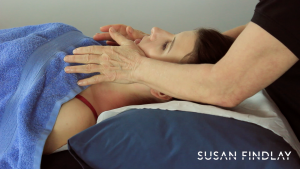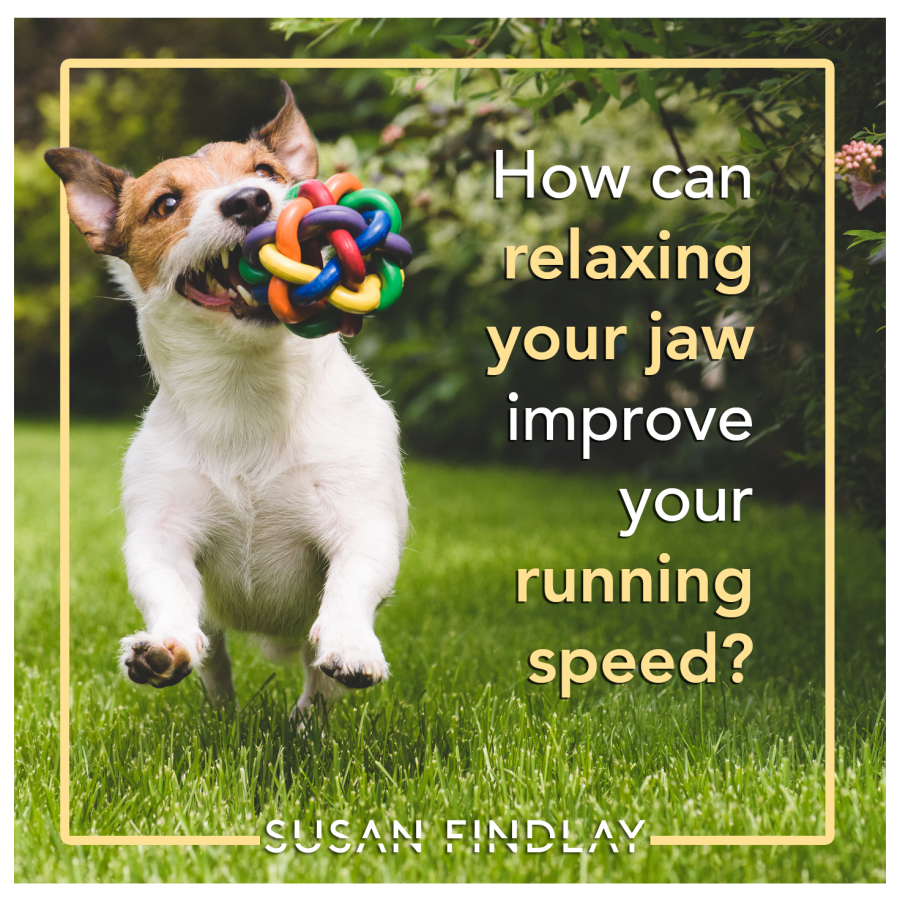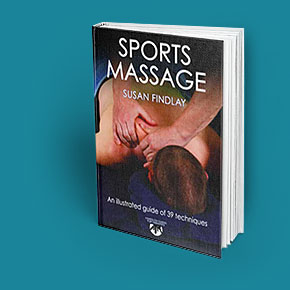If you were to observe a world class sprinter’s jaw in slow motion, you would notice how relaxed it is while running. The fluidity of movement in the upper body, especially the shoulders and arms enable the force of the lower limbs and torso to take over and ultimately produce better form as tension is released.
Despite numerous clients requiring treatments for injuries in and around the jaw, early training in sports and remedial massage therapy did not equip me with the skills necessary to treat areas connected to the cranium. In fact, 20% of my clients presented with intraoral and external jaw issues and many others presented with associated symptoms. This demonstrates that it is vital element of treatment and cannot afford to be sidelined. I believe when treating clients, we should always use a global approach to influence our strategy. That way we can ascertain whether the symptom could be part of a more serious problem.
Signs & Symptoms
The most common symptoms of impaired jaw function are pain, headaches, toothaches, unusual noises in the jaw such as clicking or grating, difficulty chewing or sensitivity and soreness around the face and neck.
Presenting symptoms can worsen according to levels of activity or stress, and tend to accumulate gradually. Experiencing tensions can be attributed to grinding the teeth; sometimes that can also be an indication of emotional stress. However, extensive dental work can also play a part. Extractions and implants can cause long term scarring and soft tissue tension. Contact sports like rugby or boxing can also cause symptoms. The repetitive impact to facial structures can be significant; I have seen a Boxer’s face alignment be completely distorted as a result of impaired jaw function, which in itself brings a whole host of problems.
Another client of mine had suffered a fracture to her face following a traffic accident, where her boyfriend’s elbow had struck her, and even factors like smoking or playing a musical instrument can act as intrinsic factors to jaw damage. The key aim of a therapist is to improve musculoskeletal balance and alignment of the harder structures and enable the client to function free from pain.
 Three Finger Test
Three Finger Test
A physical examination of the jaw typically includes a 3 finger test, which focuses on the clients structural alignment, movement and the palpation of any differences in soft tissue. During the test if possible, a client will open their mouth with enough room for 3 vertical fingers to comfortably fit between the teeth, at the joint of the second phalange. However, if this is not possible, a client can begin with gently opening their mouth, without straining, as far as possible. It is important that the jaw remains relaxed, as gentle mobility will achieve better results. It may be a gradual process, starting with one or two fingers, working towards stacking the fingers as a goal, or can be used as a warm up, de-stressor or re-alignment tool.
Static Visual Assessment
Useful indicators of a client’s condition can be found in facial structural alignment, for example;
Note the placement of the cheekbones, looking for any height or size discrepancies.
Examine the alignment of the nose, checking for any signs it has been previously fractured, or whether it moves to one side.

The stacking of the lips may indicate previous surgery; check the injury is consistent with the incident, or their occupation e.g. a trumpet players embouchure.
Check the centre of the chin and how it relates in relationship to other structures.
Ears, eyes and eyebrows should be included in the assessment, paying attention to any obvious issues with grooming or piercings.
Functional Assessment
To check for mandibular deviation ask your client to open their mouth, checking whether it opens easily in a straight line, or whether there is any strain or jagged movement, deviating the jaw in a C or S shaped curve. If deviated movement is identified, it could signify restrictions in and around the joint.
Lateral excursions involve moving the jaw from one side to another. These should be measured from between mid-lines, with the client moving the mandible as far as they can each way. To assess the fluidity of movement and sounds, place the heel of both hands carefully on each side the of the cheeks, covering the temporomandibular joint.
These tests are not inclusive of all the surrounding structures that can influence
a clients presenting condition. As with anything I will always look further, perhaps even as far afield as the feet, but for the purpose of this blog I will focus on the basics. That said, building a full, detailed case history can assist in your treatment plan and increased, positive results, therefore limiting a jaw examination to the client’s facial features would not be advised.
 4 Top Tips for Massage
4 Top Tips for Massage
Intra-oral work requires a good level of communication between therapist and client. Agreeing possible hand signals for the client to use before treatment is advised.
It is best to use the heel of your hand when working around external sensitive joints, rather than the tips of your fingers or thumbs. Pressure can be varied for more specialised work, through the scaphoid region at the base on your thumb.
Always work slowly, using a comfortable pressure, and lighten the pressure if your client appears to be in discomfort
Home care should be included to help mobilise and soften tissue, supporting any ongoing changes.
Home Care:
 Clients can learn self-care exercises to help relax their jaw, these are most effective when practiced before going to bed, aiming to ease tension throughout the night.
Clients can learn self-care exercises to help relax their jaw, these are most effective when practiced before going to bed, aiming to ease tension throughout the night.
A good technique to suggest to clients, is to breathe deeply into the ribs, keeping the shoulders relaxed. On an exhale, persuade the jaw to drop so the mouth is open slightly and take a few relaxed breaths. After repeating this exercise a few times, they should notice reduced tension in the starting position.
If clients find they have a tight jaw, or other signs of tension in the face when they run, it would be pertinent to alter the home care exercise to allow the jaw to drop and flop on an exhale. If the tension is due to squinting, suggest holistic remedies to relax the face, and ultimately relax the body.
Teaching client’s self-massage as a means of aftercare is a great way to boost successful outcomes. The routine is simple, but effective. To begin, warm up the tissue using the heel of the hand placed flat on the temporomandibular joint, moving in light compressional movements between 5 and 10 times, or when you can feel a release of tension. Then, sink the hand deeper, as far as is comfortable, maintaining the hand position while opening the jaw in a yawn like state. Continue to release and repeat this movement until the jaw can remain slightly apart without strain.
The process of teaching your client these routines is made easy when they are embedded and practiced within your own. This also gives you an example of how it should feel when done correctly. Home care routines improve your treatment outcomes, and inspires clients to play an active part in their tissue health.
It might seem like an oxymoron to relax while you’re running, but to develop and maintain good form it is essential to keep relaxed, and those that run the best integrate their whole body, not overlooking the jaw and facial muscles.
If you’re interested hearing or seeing more from me, you can sign up for my free Massage Monday Video subscription.

